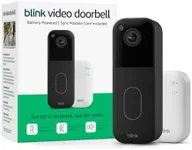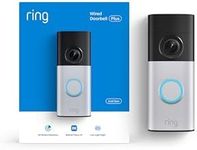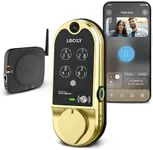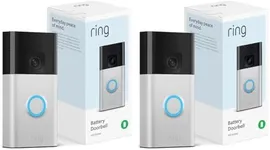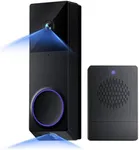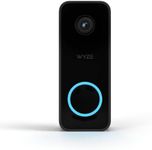Buying Guide for the Best Doorbell Cameras
Choosing the right doorbell camera is all about understanding what you want from your home’s security and convenience. Before you start browsing, consider how you want to use the camera—are you mainly interested in seeing who’s at the door, checking for package deliveries, or monitoring activity while you’re away? Think about where you’ll install it, what kind of smart features you’ll use, and how it needs to work with your home’s existing systems. As you compare options, focus on the key features that match your needs and living situation.Video ResolutionVideo resolution tells you how clear and detailed the video footage from your doorbell camera will be. Higher resolution (like 1080p or above) means sharper images, making it easier to recognize faces and details. Lower resolutions may be fine for basic monitoring but might make it hard to identify visitors in certain conditions. If you want crisp, clear videos, especially for security or sharing footage with others, choose a higher resolution. For basic awareness, standard definition may suffice. Think about if you'll be viewing footage often or sharing it—your needs will guide the best choice.
Field of ViewThe field of view indicates how much area the camera can capture in a single frame. A wider field of view (measured in degrees) covers more of your front porch or entryway, while a narrower view focuses more directly on the immediate door area. If you have packages left in a wide area, or want to see more of the approach to your door, pick a wider angle (like 160° or more). For smaller doorways, a standard or narrower angle might be enough. Consider your entry layout and what you want to see when making this choice.
Motion DetectionMotion detection allows your doorbell camera to alert you whenever someone approaches your door. Some models offer basic motion alerts, while others have advanced options like adjustable zones or smarter algorithms to avoid false alarms (like moving trees or passing cars). If you live in a busy area, features that let you customize what triggers an alert are helpful. Decide how often you want to be notified and if you need advanced customization to avoid constant pings. Your daily routine and the level of activity around your home should help determine how advanced this feature should be.
Power SourceDoorbell cameras are usually powered either by wired connections or built-in batteries. Wired models connect to your home’s existing doorbell wiring and often provide more consistent power, while battery-powered options are easier to install without wiring but need regular recharging or battery changes. Choose a wired option if you want a set-it-and-forget-it experience and have the wiring available. Go with battery-powered if you prefer easy DIY installation, especially in places without doorbell wiring or for renters. Consider what’s already set up at your home and how often you want to handle maintenance.
Smart Home CompatibilityMany doorbell cameras can connect to other devices in your smart home system, like voice assistants, locks, or lights. If you already use smart home devices, make sure your new camera will work smoothly with them. For example, if you have a smart speaker, you might want a doorbell camera you can check through voice commands. Consider what devices you already use, or might get in the future, and look for a camera that’s compatible. This makes your setup more convenient and helps everything work together seamlessly.
Two-Way AudioTwo-way audio lets you talk to visitors using your phone or smart device, no matter where you are. This is great for giving instructions to delivery people, speaking to friends or neighbors, or scaring off unwanted visitors. Some cameras provide clear audio in both directions, while others may be less crisp. If you value being able to communicate instantly or need to use your doorbell camera for more than just viewing, prioritize this feature. Check that the system offers reliable and easy-to-use audio, especially if you expect to use it often.
Night VisionNight vision allows the camera to show clear images even in low light or darkness. This is important if you want your doorbell camera to work effectively at night or in shadowy areas. Infrared night vision is common and provides black-and-white images in the dark, while some advanced models may offer color night vision. If you get a lot of visitors or deliveries after dark, or just want peace of mind all night, make sure the night vision quality meets your needs. Evaluate your entryway’s lighting situation and choose accordingly.
Storage and Video AccessYour doorbell camera’s video clips can be stored locally on a device or in the cloud, often with varying subscription fees. Some cameras save footage to an SD card, while others upload video to an online account where you can review or download it. Cloud storage offers easier access from anywhere and longer history, but may require ongoing costs. Local storage means fewer ongoing fees but can be less convenient. Think about how important it is for you to review past footage, share images, or have backups, and choose the storage option that best matches your habits.

